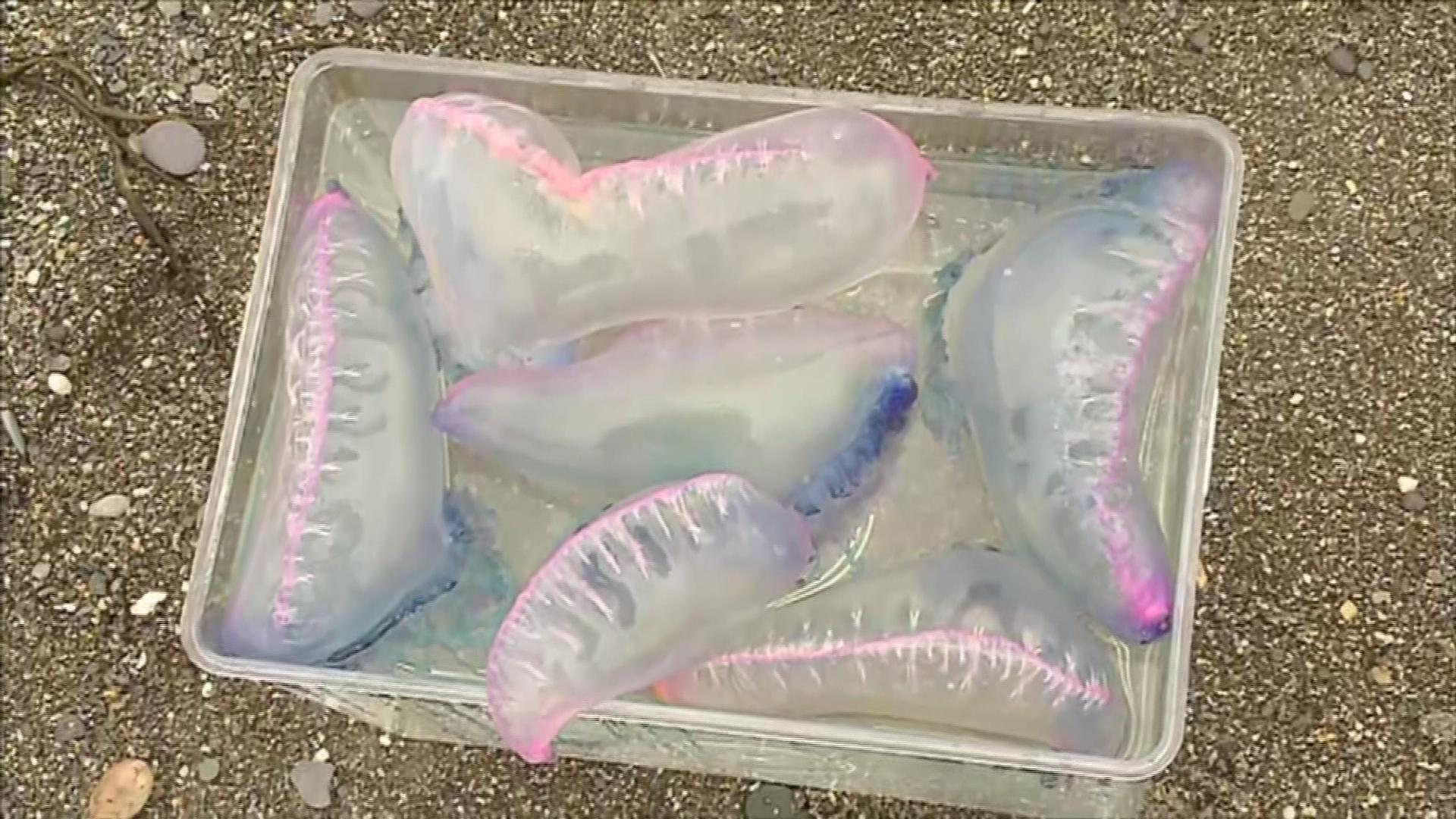Portuguese man o' war spotted on County Clare beaches

The creatures look like jellyfish but are not classed as such - stock image
At a glance
There have been sightings of the jellyfish-like creature the Portuguese man o' war on some beaches in County Clare.
The species can deliver a toxic sting, which can be fatal for some.
Parents and pet owners are being warned to be vigilant.
It comes after there was a sighting in Northern Ireland last month.
- Published
There have been sightings of the jellyfish-like Portuguese man o' war on some beaches in County Clare.
The creatures, which resemble jellyfish but are a species of siphonophore, cause painful stings if people come in contact with their tentacles.
They can be fatal for those who may suffer a severe reaction.
Sightings have been reported at Fanore, Lahinch, Doughmore, Doonbeg and Kilkee beaches, according to RTÉ.
Jellyfish are common on Irish beaches but the man o' war is rare in colder North Atlantic waters. They can be swept in by the wind.
It comes a month after a sighting in Northern Ireland on the West Strand beach in Portrush, County Antrim.
Stormont’s Department of Agriculture Environment and Rural Affairs (Daera) warned people to avoid contact with them.
County Clare’s water safety development officer Clare McGrath confirmed sightings of the deadly species.
She said that lifeguards are on the lookout for them on the county's beaches and can get rid of them.
But she also appealed to people to be informed and vigilant about touching them.

The Portuguese man o' war is rare in colder waters but have been spotted on some Irish beaches
"I'd be more worried about children and pets who are very curious and who are walking on the beach," Ms McGrath told RTÉ .
"These siphonophores are quite distinctive and have this bluish balloon like float on their bodies, and children may be attracted to them and might poke them.
"And animals may also be inclined to approach them. Swimmers will see them instantly with their blue balloon in the water and can stay away from them.
"People should inform the lifeguards of their presence if they see them.
"If they get stung people should remove or scrape the tentacles free with something like a credit card and clean their skin with sea water to flush out the toxins."
It is believed the name comes from the shape of the sail which, when it is inflated, looks like an 18th Century Portuguese battle ship.